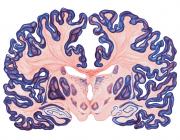Promises and limitations of human intracranial electroencephalography
Publication Year
2018
Type
Journal Article
Abstract
Intracranial electroencephalography (iEEG), also known as electrocorticography when using subdural grid electrodes or stereotactic EEG when using depth electrodes, is blossoming in various fields of human neuroscience. In this article, we highlight the potentials of iEEG in exploring functions of the human brain while also considering its limitations. The iEEG signal provides anatomically precise information about the selective engagement of neuronal populations at the millimeter scale and the temporal dynamics of their engagement at the millisecond scale. If several nodes of a given network are monitored simultaneously with implanted electrodes, the iEEG signals can also reveal information about functional interactions within and across networks during different stages of neural computation. As such, human iEEG can complement other methods of neuroscience beyond simply replicating what is already known, or can be known, from noninvasive lines of research in humans or from invasive recordings in nonhuman mammalian brains.
Journal
Nature Neuroscience
Volume
21
Pages
474-483

